For Government, It's DSO or Die
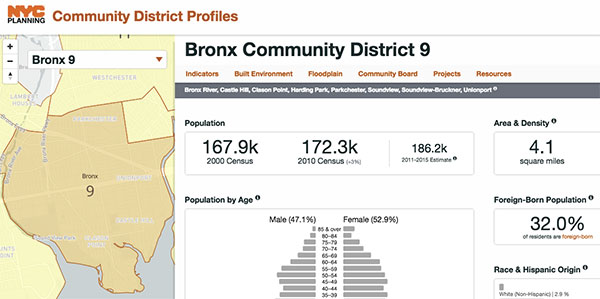
City Planning's Planning Labs
Private sector innovations in information technologies are transforming virtually every industry, and the rate of change seems to be accelerating. A decade ago, Facebook was a website used almost exclusively by college students to keep in touch with each other; today it’s one of the world’s largest media distributors with the capability of swaying elections simply by tweaking its algorithms; and in ten years it’ll likely be directing a self-driving car to drop you off at your friend’s house.
The mindblowing rate of innovation taking place in the private sector is a stark contrast to the glacial pace of innovation in government bureaucracies. Indeed, to many people in the private and public sectors, government agencies appear, at best, frozen in time, and at worst, actually deteriorating before our very eyes. New York City’s beloved subway system is a case in point.
It doesn’t have to be this way. Government agencies can leverage new tools, techniques and technologies to improve their effectiveness and even delight their users, but doing so requires more than simply signing a fat contract with a vendor of high-tech wares. It requires government adopting the values of the “open source way”: open exchange, participation, rapid prototyping, meritocracy, and community building.
Doing so will change government agencies in significant ways: new roles, new skills, new trainings, new people, and new organizational structures.
It’s easy to see why wholesale reform of government agencies isn’t happening: people don’t want to lose their jobs. But piecemeal reform is taking place within government, and patterns are emerging that show how small teams within government that deliver “digital services” to other government units and agencies - things like websites, mapping systems, workflow management solutions and other high-tech products and services - are driving change.
The major factor that distinguishes these newly emergent “digital services organizations” (DSOs) from other technology groups within government is that their main job isn’t procuring software from large software companies, but instead to leverage open source software, peer to peer collaboration methodologies, and agile development approaches to build their own products.
The origins of the “digital service” concept can be traced back to 2010 when the government of the United Kingdom began a website redesign project that turned into something much more: a rethinking of the very nature of government. Mike Bracken, co-founder of the U.K.’s Government Digital Services (GDS), articulated “government as a platform” in his 2014 PDF talk. GDS has gone on to become a vocal advocate of the open source way in government and is responsible for saving the UK Government over £1 billion a year since its inception in 2013.
The United States federal government got serious about starting a GDS-style entity in 2013 when the Obama administration realized that its hallmark legislative achievement, the Affordable Care Act, could be jeopardized by its inability to successfully launch the HealthCare.gov website by the time the legislation came into effect.
Once it became clear that the project was massively mismanaged, the administration assembled a crack team of technologists from inside and outside government to get the website up and stable. To achieve this goal, the team used many open source and agile development methodologies popular in startup culture. Ultimately they got the site launched, and many of the people involved went on to create and lead high-tech units in the government such as the U.S. Digital Service in the White House, and “18F” within the General Services Administration.
18F “collaborates with other agencies to fix technical problems, build products, and improve how government serves the public through technology.” Its process relies on open source and startup-centric principles of “human centered design, agile methods and open technology.”
This approach is very different than the “monolithic procurement” approach that usually happens within government where “large, complex, multi-year contracts” are drawn up between government agencies and large corporations. “According to the Standish Report from 2003-2012, 94 percent of government software projects over $10 million are either over budget, over time, or just don’t work,” via the 18F website.
Instead of monolithic procurement, 18F and other DSO advocate for in-house open source development and modular procurement, which is “a strategy that breaks up large, complex procurements into multiple, tightly-scoped projects to implement technology systems in successive, interoperable increments.” By pairing this with open source software development and meticulous documentation, 18F can share the innovations they develop for one agency with others, reducing costs for everyone involved and allowing anyone in the world to use and contribute code to their projects.
This approach has been highly successful. In less than four years, 18F has grown to nearly 200 staff and completed hundreds of projects for over 25 federal agencies that range from building public websites (like FEC.gov) to backend infrastructure (like Cloud.gov) and a myriad of products that help other government workers build faster, more accessible, and more secure technology products. They’ve been successful to the point where for-profit software industry groups lodged an official complaint that 18F was hurting their businesses because they were saving the federal government too much money.
The significance of 18F’s accomplishments, along with the clarity of their message about how to reform government, has gone almost entirely unnoticed by nearly everyone, except for a small but very online group of people who self-identify as “civic technologists.” This community consists mostly of people who work as technologists for private enterprise by day, and try to use their technical skills to more broadly help people by night. Rarely do these people actually work within government, and if they do, it’s rarer still for them to have the freedom and support within government to perform the type of work that 18F does.
While there are a number of federal entities that have adopted the DSO model such as Defense Digital Service, which applies 18F-style approaches across the Department of Defense, at the municipal level there are very few: San Francisco has a small digital services team, and the teams managing websites in Boston and Philadelphia have some DSO characteristics, but New York City Department of City Planning’s Planning Labs follows the 18F model most closely.
Planning Labs is a nine-month-old, three-person unit within DCP that isn’t shy about borrowing from 18F’s playbook. Its site is built with 18F code, its published principles are nearly identical, and its members’ outspoken support for open source as the path forward for government is just as loud.
In its short existence, its already launched a half-dozen products, each of which uses open source approaches to deliver a standardized product. Looking through its portfolio of products - from its zoning tool, facilities directory, tax lot viewer, and statistical mapping tool - it becomes clear that Labs isn’t simply building products, but instead organizing the city’s information in an open, standardized, and future-friendly way that will benefit New Yorkers for generations. It’s not hard to imagine these various systems being weaved together along with other open source solutions such as David Moore’s City Council tracking system Councilmatic to create a comprehensive city information system like SimCity, but real, and in real-time.
For Chris Whong, Planning Lab’s founder, NYC Planning Labs “is responding to the need to create more functional and accessible tools for planners, practitioners, and the general public to use and analyze data. With a smaller team, human-centered design, agile processes, and open source software, we are delivering tech products better, faster, and cheaper in-house.”
Whether one thinks government is good or bad, or somewhere in between, almost everyone agrees that it should work effectively, operate transparently, and if it’s going to provide services to the public, they should be of decent quality and at a reasonable costs. The capacity for government to deliver services, and the public’s desire to pay taxes to fund government agencies to provide them, is heavily dependent on the effectiveness of government agencies and the civil servants that work within them.
In an age of rapid private sector innovation, those agencies and civil servants will need to be able to leverage technology effectively if they want to keep up with their private sector counterparts. If they don’t, the public will want to privatize these services. It’s that simple.
The “do or die” nature of this moment can’t be overstressed enough. If DSOs like 18F and Planning Labs aren’t given the resources and flexibility they need, their members will become dejected and find happier homes in a private sector that values their talents.
Anyone who is passionate about good government, anyone who thinks the public sector is important and worth preserving, should be studying and supporting DSOs and the principles that they follow. If they aren’t the future of government, it’s possible nothing is. Such is the sentiment of Matt Brackin, the co-founder of the U.K.’s GSA, who recently tweeted: “I hoped the internet era would revitalise our state. It's just exposed its bankruptcy.”
***
Devin Balkind is a technologist and nonprofit executive who works on civic technology projects in New York City through Sarapis Foundation and on humanitarian projects around the world through Sahana Software Foundation. He was a candidate for New York City Public Advocate in 2017. On Twitter @DevinBalkind.
***
Have an op-ed idea or submission for Gotham Gazette? Email This email address is being protected from spambots. You need JavaScript enabled to view it.
Don’t Pass a State Budget Without Investment in Human Services
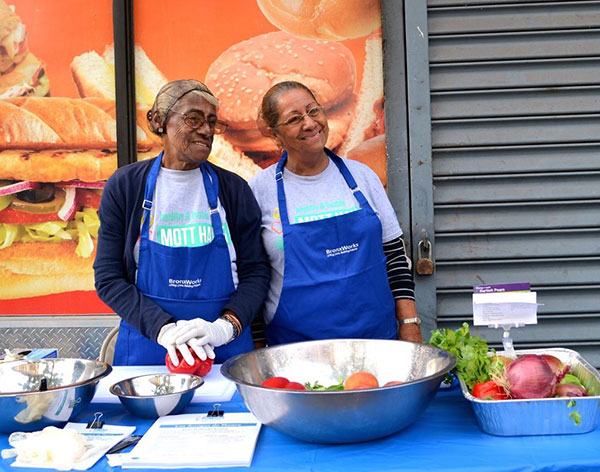
(photo via @UNHNY)
Poverty-related issues such as homelessness or family crisis treatment like opioid addiction need more than a simple infusion of cash. Addressing the underlying issues and building community resilience requires long-term, community-based organizations dedicated to ensuring that families and individuals have access to local programs that address the stability of their communities.
State government appreciates this expertise as it contracts with human service organizations to deliver programs on its behalf, but government leaders fail to provide the funding necessary to fully support the organizations’ long-term stability. Unfortunately, state contracts rarely cover the full cost of human services, which has resulted in a chronically underfunded sector with crumbling infrastructure and an undercompensated workforce. The absence of adequate funding directly undermines the long-term stability of this sector, which undermines the short- and long-term stability of its workforce and clients.
Employees in the nonprofit human services sector are poorly compensated, despite their experience and education — 41% percent have a four-year college degree and another 25% have some college education. As a result, these dedicated workers often find themselves relying on government benefits to support their own families. Low wages drain talent from our sector as the workers with experience move on to find jobs that provide better compensation. Employee turnover undermines human services programs, which are best served by a stable workforce, whose members earn the trust of their clients and can most effectively help them.
The human services sector vigorously supported Governor Cuomo’s efforts to increase the minimum wage, but we were disappointed when our sector’s contracts were never adjusted by the state to fund the wage increases for human services employees. Unlike for-profit businesses, nonprofit human service organizations cannot increase the cost of their services to pay for higher wages. These increased wages must be paid for by the state.
The governor and state Legislature are currently negotiating the new budget for the state fiscal year that beings on April 1. We have joined a statewide coalition of 350 nonprofit human services providers, Strong Nonprofits for a Better New York, in order to call on the state to make key investments to strengthen the human services sector.
One of our key requests is that the state fund the minimum wage for human service contracts, so that we can provide much-needed salary increases for this workforce.
Outdated infrastructure is also a major concern among nonprofit organizations.
Building repairs and technology upgrades are not included in contracts, yet are essential to running quality programs. The state created the Nonprofit Infrastructure Capital Investment Program (NICIP) to address this issue, but, unfortunately, current funding levels are not sufficient to support current needs. Hundreds of nonprofits have applied for a very limited number of grants and we call on state leaders to add funding to NICIP to support these outstanding grant applications.
Without these critical investments in our workforce and capital for our facilities, nonprofit human services organizations will be forced to serve fewer families, children, immigrants, and older adults in the coming year. The New York State Assembly has included these items in its budget priorities and now we need the governor and the State Senate to support funding the minimum wage and continuing to fund infrastructure.
Without this investment it will be our communities that ultimately suffer.
***
Susan Stamler is the Executive Director of United Neighborhood Houses, an association of settlement houses that reaches more than 750,000 New Yorkers each year. On Twitter @UNHNY.
***
Have an op-ed idea or submission for Gotham Gazette? Email This email address is being protected from spambots. You need JavaScript enabled to view it.
Attacks on Yeshivas Present a Dangerous Slippery Slope
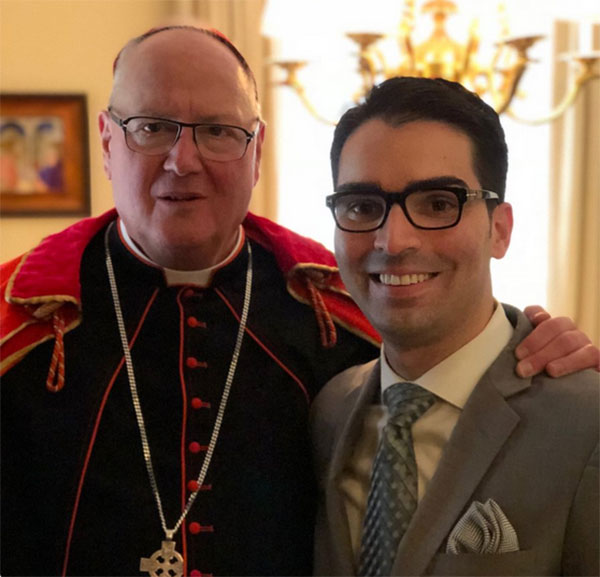
Eric Ulrich, the author, right, and Cardinal Dolan (photo: @eric_ulrich)
In the coming months, the city and state education departments are expected to rule on an issue that may have huge repercussions for parental school choice and religious freedom. A small group of former yeshiva graduates have alleged that religious schools in Orthodox Jewish communities are failing to provide adequate education to students. As an avid supporter of parental choice, I worry education leaders will side with these critics, posing a threat to private schools well beyond the Jewish community.
Many years ago, I attended P.S. 63, an elementary school in Queens. My mother, a single parent and devout Catholic, made the decision to transfer me to the former Nativity of the Blessed Virgin Mary School, a Catholic elementary school. She wholeheartedly believed Catholic school was a better environment for me at the time – and it was. Appreciative of the opportunities Catholic school afforded me, I continued my religious education at Cathedral Prep Seminary High School.
As the product of both public school and Catholic school education, I recognize the importance of parental school choice. The values instilled in me through my religious upbringing and education paved the way for my career as a public servant. Attending Catholic school ignited my passion for helping people; and at one point in my life, I seriously contemplated becoming a priest. If my mother did not have the freedom to enroll me in the school of her choice, I might not have taken the path I’ve taken, which I have found extraordinary fulfilling.
During my time in office, I have visited many yeshiva schools. In each of those visits, I saw a vibrant atmosphere. It is clear to me the Orthodox community takes education seriously. The school day begins just after sunrise, and the majority of yeshiva students study long after they are dismissed. Their studies are deeply rooted in the Torah and Talmud, which encourage discussion and debate at a very young age. Their studies focus heavily upon religious and legal texts, and teachers employ a method of Socratic dialogue with students more commonly found at law schools. That may not be a familiar experience for graduates of traditional secular schools, but tens of thousands of parents choose these schools each year because yeshivas have served them – and their families – well for generations.
The narrow issue before officials is whether these yeshivas are adhering to a vague state regulation requiring private schools to provide a substantially equivalent education to that of public schools. What that means in practice is enormously subjective; private and religious schools throughout the state are awaiting the results of a looming “clarification” from the State Education Department with deep trepidation.
Government officials are being subjected to a pressure campaign by anti-yeshiva activists, who continuously attack the Orthodox Jewish community under the guise of educational quality. We must continue to protect freedom of religion and the rights of parents to send their children to religious schools – whether they are Catholic, Islamic, or Jewish. If we do not stand-up for yeshivas today, the future of other private schools may be next.
***
Eric Ulrich is a City Council member representing parts of Queens. On Twitter @eric_ulrich.
***
Have an op-ed idea or submission for Gotham Gazette? Email This email address is being protected from spambots. You need JavaScript enabled to view it.
I’m a NYCHA Resident Who Supports Private Investment in Public Housing
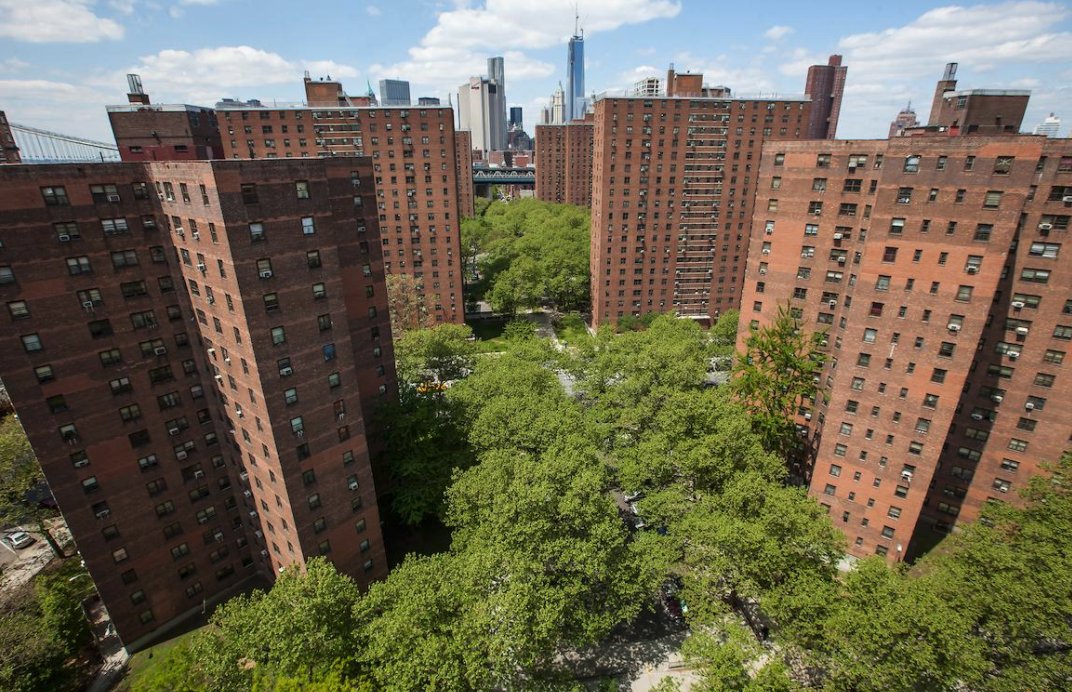
(photo: @NYCHA)
After a harsh winter during which hundreds of thousands of NYCHA residents suffered without heat and hot water at one time or another, many people across our city have been asking a simple question: do public housing residents deserve the same quality of life as everyone else?
The answer is obvious: of course we do. Better yet, there is a clear path to make that a reality, and soon.
The fact is that just a miniscule fraction of New Yorkers living in public housing enjoy the benefits of private management and well-funded maintenance operations. Hundreds of thousands of our fellow citizens do not – and they are bearing the burden of a system that faces a $25 billion deficit, with little hope for anywhere near enough federal funding on the horizon.
Around 320,000 of those residents went without heat or hot water at certain points this winter, often during the coldest stretches – and now New York must take action to ensure that this cannot happen again. Public-private partnerships will improve the living conditions of NYCHA families, and it is time for more of those agreements. Not next year, not in two years, not in three years. Now.
It is no secret that urging public-private partnerships for NYCHA is politically challenging – and I was once skeptical of these arrangements myself. But if that kind of collaboration means being able to ensure that every NYCHA family has heat when they most need it – and let’s be clear that this is exactly what is at stake here – then public-private partnerships are not a problem, as some critics have said, but are instead part of a solution.
I am a resident leader of a NYCHA building that has already benefited from this kind of work. I have firsthand understanding of the type of progress that is possible from these partnerships. Simply put, I am living in a success story every day, but my heart is breaking for the hundreds of thousands of residents still struggling underneath the weight of a broken system.
In 2014, NYCHA engaged in a public-private partnership at several Section 8 developments across the five boroughs – totaling nearly 900 homes including my building, Campos Plaza I – because of the potential benefits it could provide for families. Despite what skeptics said at the time, it turns out that they were absolutely right.
This winter, our building had the heat and hot water it needed. We got to cook in renovated kitchens. And, this spring, we will enjoy our playgrounds and other open space. Our rents did not increase, and we all feel secure in our homes because we know that NYCHA still has ultimate control of our building and retains the power to remove the private partner should it ever want to do so.
At a time when city funds are stretched so thin and federal funds are unlikely to arrive, these positive changes did not come from the wave of a magic wand. They exist because of resources made available through a public-private partnership that provided the necessary investment in our apartments.
It is, at the end of the day, a really simple concept: when there are not enough public dollars to ensure that NYCHA buildings receive the maintenance and renovations they need, public-private partnerships can fill those gaps and give residents like me a better quality of life.
It was encouraging to see NYCHA move forward on another public-private partnership to leverage private financing at its Ocean Bay complex in Bayside. At that nearly 1,400-unit development, which was battered by Hurricane Sandy and remained in dire need of improvements, the deal generated an additional $560 million in financing for better buildings and new infrastructure. Families in Ocean Bay, too, understand what is at stake.
And of course it goes without saying that NYCHA residents believe that the federal government should invest more in public housing. But the reality today is that we cannot yet expect significant federal dollars to come – and that is simply no reason to deny my fellow residents the same quality of life I get to enjoy.
So, yes, those of us living in public housing do deserve the same quality of life as those living in private housing – but all of us, not just a lucky few. All of us deserve a decent, comfortable home. The tools are out there, it is now up to elected officials to make that a reality by encouraging more private-partnerships across New York City.
***
Dereese Huff is the resident association president at NYCHA’s Campos Plaza I.
***
Have an op-ed idea or submission for Gotham Gazette? Email This email address is being protected from spambots. You need JavaScript enabled to view it.
Trump Administration Attacks on Title X Could Result in Even More Deceptive Women’s Health Clinics
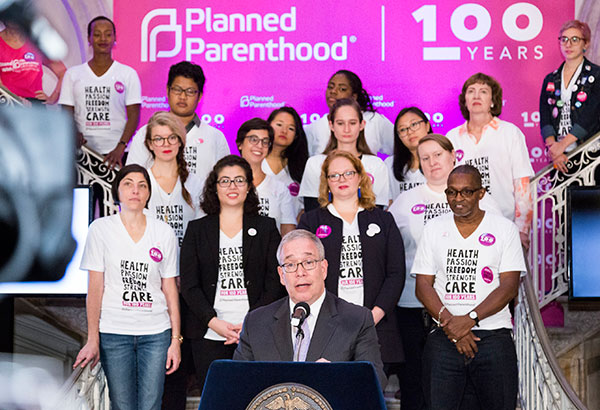
Comptroller Stringer with Planned Parenthood (photo via @NYCComptroller)
The Trump-Pence administration just took aim at the Title X program—the nation’s long-standing program for affordable birth control and other sexual and reproductive health care that more than four million people nationwide, including 150,000 New Yorkers, rely on each year.
The administration issued a new call for funding applications that radically changes the program's priorities—and that will shift funding away from expert sexual and reproductive health care providers, to anti-abortion crisis pregnancy centers that masquerade as legitimate health care facilities solely to shame and mislead pregnant individuals about their reproductive health options.
There’s no denying it: This is all part of a coordinated attack on access to accurate sexual and reproductive health care information—and to access to birth control and safe, legal abortion.
The attacks don’t stop there. On Tuesday the Supreme Court heard its first major reproductive rights case since the confirmation of Justice Neil Gorsuch, Trump’s anti-abortion appointee—and the case could also change how crisis pregnancy centers operate. It will determine whether crisis pregnancy centers will be allowed to continue to lie to people about their reproductive health care options by calling it First Amendment promoted speech.
Let’s be clear – we must fight back against these attacks to ensure that New Yorkers, especially those with low incomes, continue to have the fundamental health care they need and deserve.
Since 1970, the government has awarded Title X grants to sexual and reproductive health care providers that offer contraception, STI testing, cancer screenings and more to help uninsured and underinsured individuals afford them. Historically, Title X is meant to ensure that every person—regardless of where they live, how much money they make, their background, or whether or not they have health insurance—has access to basic, preventive sexual and reproductive health care. This program is a critical safety net for many people who would otherwise go without health care, like those in low-income communities and communities of color who disproportionately face barriers to care.
When programs like this are under attack, it’s our most marginalized communities and at-risk families who stand to suffer the most. As a recent report by the New York City Comptroller’s Office showed, in 2015, 91 percent of people served under Title X throughout New York State were women, and 60 percent had incomes at or below the federal poverty line. Nearly one-third were uninsured.
The U.S. Department of Health and Human Services’ new guidelines for Title X would push these patients to go to facilities that emphasize abstinence-only ideology and that do not offer the full range of birth control options. The new guidelines are designed to roll back access to highly effective forms of birth control, like long-acting reversible contraceptives (IUDs and implants).
These guidelines also clearly open the door to anti-abortion fake clinics participating in the program, even though they use deceptive tactics such as providing medically inaccurate information to women, including lying about the gestational age of a pregnancy in order to make it harder for someone to access an abortion.
Already, throughout New York City, crisis pregnancy centers masquerade as legitimate health care facilities solely to shame and mislead pregnant individuals about their reproductive health options and prevent them from seeking abortion care. The new Title X guidelines could result in these fake clinics receiving taxpayer dollars and expanding, targeting even more people who are seeking legitimate reproductive health care services. These misleading anti-abortion facilities may continue to exist—but we shouldn’t be supporting them with federal taxpayer money.
This egregious attack on Title X is an attack on women and vulnerable communities, and on the rights of New Yorkers to make the health decisions best for them and their families.
All New Yorkers should have control over their sexual and reproductive lives. This includes the decision of whether, when, and how to have children, how to practice healthy and respectful sexuality, how to protect ourselves and our partners against STDs, and more. When we make our own decisions about our bodies and our health care, we determine our own futures. And when our reproductive autonomy is under threat, so too is our collective health and well-being as a community and as a city.
We will do everything we can to ensure that all people are empowered to take control of their health and their futures. We see the hostile agenda coming from Washington to take away our basic freedoms and target our most vulnerable communities, and we are ready to fight for you and with you every step of the way.
***
Scott M. Stringer is the New York City Comptroller. Laura McQuade is President and CEO of Planned Parenthood of New York City. On Twitter @NYCComptroller and @PPNYCAction.
***
Have an op-ed idea or submission for Gotham Gazette? Email This email address is being protected from spambots. You need JavaScript enabled to view it.
When Lawmakers Fail on Gun Sense, Generation Z Steps Up
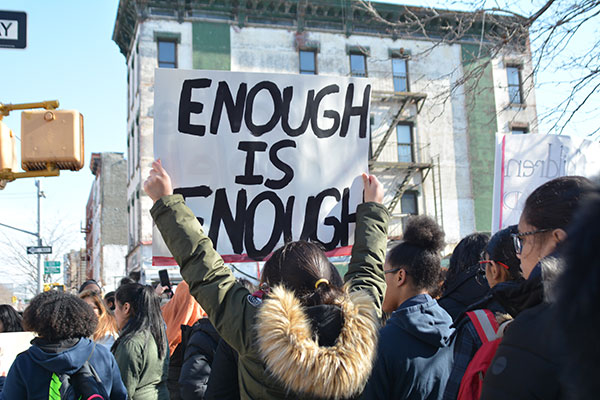
(photo: Cristina Gonzalez)
We were 12 years old when 20 children and six adults were gunned down in Sandy Hook Elementary School. One might think this a bit young to be exposed to such a raw act of violence, and experience this shift where gun violence was now becoming an American norm. We felt lucky to be living in a state where gun laws were strict and fairly well-regulated. But Sandy Hook hit us both hard. To hear about a school full of innocent children being targeted, our stomachs turned over in grief and disgust, and our eyes were opened to an entirely unfamiliar world of hatred and distrust in our government.
The ability to own guns in this country is a result of our Second Amendment. A law written in the 18th century when our government was still fresh and new, we had just won our war against England and were planning on beating back any possibility of invasion. At the time, this law made sense. Our citizens had land to defend, and we wanted to be sure our central government didn’t abuse their power and create an oppressive regime. All these reasons made the Second Amendment perfectly reasonable at the time. Now, 227 years later, the original intentions of our Founding Fathers have come to be interpreted by some as an absolute, unflinching freedom to bear arms, for almost everyone of almost every kind of weapon -- even when those arms are not in any way necessary in the day-to-day lives of Americans or likely be used to fend off invaders or an overreaching government.
We want to preserve people’s rights and freedoms, though some might assume our position intends to infringe on that. For so many years, we have had to rely on our elected representatives, and the interest groups and lobbyists linked to Congress, to make real, national change on our behalf. They have failed us.
Our next congressional election is this coming November. With 470 seats up for grabs, and more than 2,400 candidates running, as newly-minted voters we realize that this fall we get the opportunity to choose who goes into those seats. We no longer have to put our trust into the people who have been letting us down and neglecting our safety year after year. Having the lives of American children threatened constantly, and the impending fear of possibly being the next victims of gun violence, has driven us to step up, and speak to our generation to finally make a call to action.
We first took steps to make sure that the March 14 walkout was not only happening in our schools but in others across the city. We provided students that didn’t have the resources or the ability to plan their walkouts with step-by-step instructions on how to conduct their own walkouts so they could make them as effective and powerful as possible while still remaining safe. In this process we found each other and together we created a platform we call Generation Z.
We’ve gathered over 2,000 kids and counting across the Greater New York Area in over 20 different schools and counting to ensure the work doesn’t end with the walkouts.
We have been working on policy points related to gun reform that need to be put in place, including the full implementation of background checks; the removal of military grade weapons and high capacity magazines; preventing teachers from being armed in schools; stricter regulations that would prevent the trafficking of guns into our state; better reporting of domestic violence convictions and enforcement of current laws barring those convicted of domestic violence offences from owning guns; and the removal of metal detectors, specifically within schools in communities of color, and replacing them with better school mental health departments.
We want Generation Z to be the platform we never had, and we don’t want to stop with the walkouts. We continue to raise money to go to Washington, D.C. to be heard on Capitol Hill. We want Generation Z to tackle the problems that we never had the opportunity to voice ourselves. We hope to gain the support of the adults in our communities, especially those with the means and privilege to help, to fulfill our mission to travel to Capitol Hill and to advocate for, and implement, much-needed change. We plan to show other young adults how to exert their power as voters and ensure progress is made. We are the future. We will be heard. We are Generation Z.
***
Amanda Delaney and Ella Marion are members of Generation Z. On Facebook: Generation Z for Gun Reform and on Instagram: @genz4gunreform.
***
Have an op-ed idea or submission for Gotham Gazette? Email This email address is being protected from spambots. You need JavaScript enabled to view it.
3 Ways New York Must Advance Reproductive Rights This Year
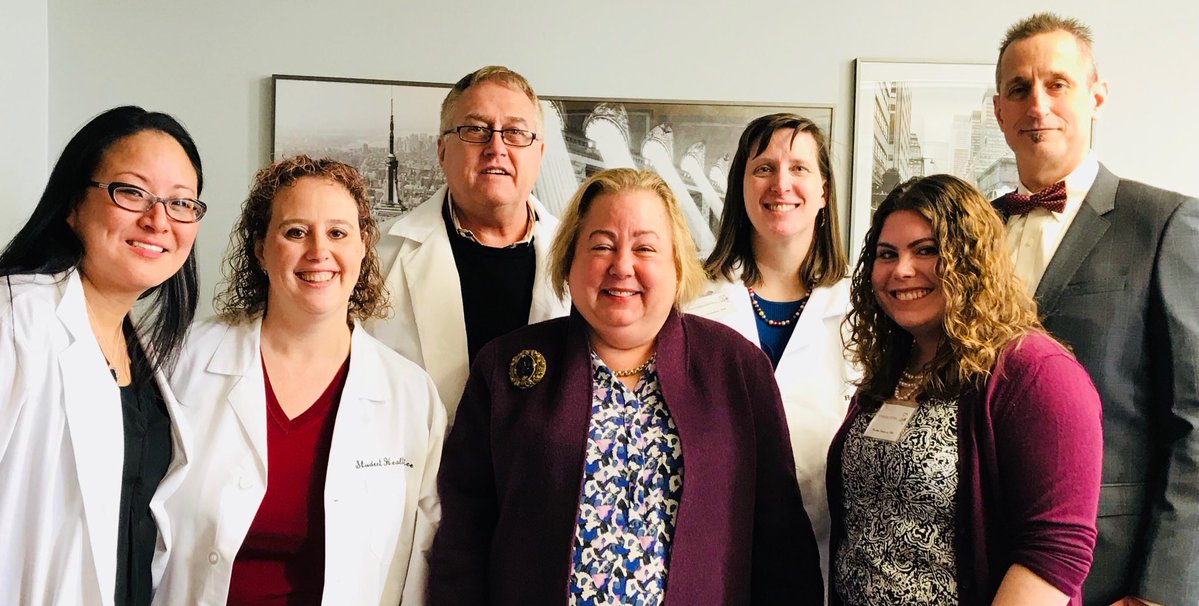
Senator Krueger, the author, with doctors (photo: @jmumfordmd)
Note: this column was written and published in March, 2018, several months before Democrats won control of the state Senate through the November elections; they will take the majority in January
On March 13, the New York State Assembly passed three critical bills regarding reproductive health and rights: the Reproductive Health Act (RHA), the “Boss Bill,” and the Comprehensive Contraception Coverage Act (CCCA). Unfortunately, the majority coalition in the State Senate continues to bottle these bills up in committee, as it has for years, preventing them from getting an up-or-down vote on the Senate floor. This obstruction simply cannot continue.
New Yorkers deserve modern laws to protect their deeply personal decisions about reproductive healthcare, and the time to act is now.
Why the urgency, you may ask, when New York is seen as a leader in protecting women’s reproductive rights, and Roe v. Wade continues to be the law of the land?
The simple answer is that there is a war on women’s reproductive rights in our country at the state and federal level, and it has significantly intensified during the Trump Administration. Conservative judges are being appointed to state and federal courts; funding is being redirected from Planned Parenthood to clinics that do not perform abortions, and from evidence-based sex education and pregnancy prevention programs to ineffective abstinence-only programs; laws and regulations seek to chip away at Roe v. Wade and restrict abortion access by creating unnecessary hurdles and criminalizing pregnancy; lack of coverage, high co-pays, and harmful regulations reduce access to contraception.
Even in New York, our reproductive health and rights are at risk because of our outdated and unconstitutional laws.
If a pregnant woman becomes critically ill after 20 weeks, or learns that the fetus is not viable, she must choose among terrible options: travel out of state to get an abortion (if her family can afford the hefty expense); carry to term and risk a dangerous labor to deliver a baby that is stillborn or able to survive only briefly, often in great pain; or possibly face criminal charges for getting the abortion in New York.
Current state law also fails to protect women and men from being fired or otherwise discriminated against by their employer for their reproductive healthcare decisions, whether making the decision to get an abortion, or simply choosing to use contraception. In addition, although access to contraceptive options is instrumental in reducing the number of unintended pregnancies, including teen pregnancies, and leads to families that are planned, safe, and healthy, many New Yorkers face barriers to contraceptive services due to lack of financial resources.
The RHA, the Boss Bill, and the CCCA address these pressing issues.
The existing New York State abortion law was enacted in 1970. It is not based on modern medical practices, and it does not guarantee the same constitutional protections as Roe v. Wade. Passing the Reproductive Health Act (S2796/A1748) would provide for abortion care after 20 weeks if a woman’s life or health is at risk, or if a fetus is not viable. Additionally, the RHA repeals outdated and unconstitutional criminal statutes banning abortion, and moves the regulation of abortion into the public health law, where it belongs, ensuring that New York State law treats abortion as health care and not a criminal act. Reproductive health care decisions should be made by a woman and her doctor – not by politicians or the government.
The Boss Bill (S3791/A566) closes a gap in current workplace anti-discrimination laws. Employees would not need to fear being the target of employer discrimination if they use contraception, get abortion care, or seek other reproductive health services.
The Comprehensive Contraception Coverage Act (S3668/A1378) requires insurance policies to provide coverage for all FDA-approved contraceptive products. Policies are also required to cover emergency contraception, voluntary sterilization procedures, patient education and counseling on contraception, follow-up services, and the provision of a 12-month supply of a contraceptive at one time, without a deductible, co-payment, or any other cost-sharing requirement.
At this critical time when women’s health and reproductive rights are under attack, New York must demonstrate bold leadership and stand up for women’s equality and healthy families. I urge my fellow New Yorkers to hold your Senators accountable. New York families have waited long enough - we can and must pass these bills.
***
Liz Krueger is a state senator representing parts of Manhattan. On Twitter @LizKrueger.
***
Have an op-ed idea or submission for Gotham Gazette? Email This email address is being protected from spambots. You need JavaScript enabled to view it.
Bridge Programs Get Big Results, But Little Support
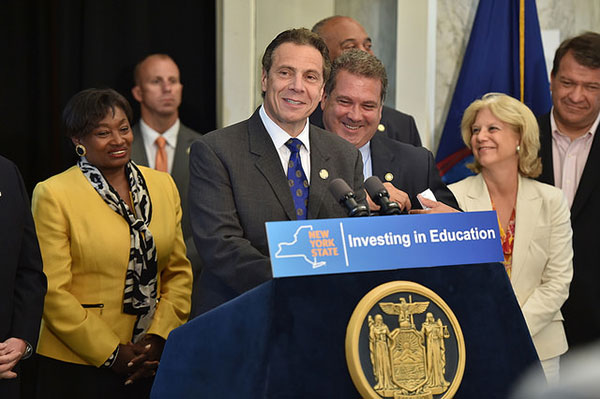
(Photo: Office of the Governor - Kevin P. Coughlin)
Governor Cuomo’s $175 million workforce development proposal, announced earlier this year, promises major new investments in the skills-building programs that New York needs. With industries like healthcare, tech, and construction facing shortages of skilled workers, the governor’s plan can help expand access to opportunity while boosting the economy.
But for millions of New Yorkers who lack math and literacy skills—including 2 million adults without a high school diploma and 2.3 million who speak English less than very well—gaining entry to effective workforce programs will first require boosting their basic skills. That is the idea behind bridge programs, which help adults with limited formal education acquire the skills they need to transition into training and higher education.
Given the enormous population of New Yorkers with these needs, expanding bridge programs should be part of any statewide workforce development proposal. Ideally, these programs can teach adult basic education in the context of an industry, while building momentum toward a marketable credential. However, fewer than a dozen programs in New York City and just a handful upstate put the full bridge model into practice.
It’s time to change this. New York State should make investing in bridge programs part of its workforce development plan.
Where the model has been implemented, the results are impressive. Bridge programs work for people with limited opportunities and no time to waste. Research has found that bridge programs are effective for students with significant barriers to employment, including those with a reading level as low as the 7th grade.
New York’s leading example is the Bridge to College and Careers program at LaGuardia Community College. Through coursework that focuses on healthcare, science, or business, the program provides meaningful context for the math and literacy skills students need to pass their high school equivalency exams.
LaGuardia’s bridge program has connected with especially vulnerable demographics: About half of its bridge students are 26 or older, almost half are immigrants, and over 50 percent read at a 7th or 8th grade level. Many of these students are balancing commitments that make going back to school particularly difficult, such as multiple part-time jobs and children at home.
A 2013 study by MDRC showed that students in LaGuardia’s bridge program were twice as likely as their peers to pass the high school equivalency exam and three times as likely to pursue a postsecondary degree. The program has proven so effective that other states are using it as a model, notably a new bridge program at Northeast Wisconsin College. But even as Wisconsin imports LaGuardia’s pioneering program, none of New York State’s 35 other community colleges have been funded to offer bridge programs of their own.
Aside from the program at LaGuardia Community College, most of New York City’s bridge programs are run by nonprofit job training and adult education providers. One notable example is Per Scholas, a respected Bronx-based training organization, which partnered with The Door to create a five-week TechBridge program where participants catch up on basic math and English skills before transitioning to Per Scholas’ IT Support job training course.
The landscape of bridge programs is even more limited upstate. One bright spot is CenterState CEO, a business development organization in Syracuse, which integrates math and literacy education into a green construction training program. Likewise, the New York Association for Continuing and Community Education offers adult basic education that bridges into a certified nurse’s assistant training program. Other initiatives organized by community colleges, nonprofits, and intermediaries only use elements of the bridge model—like combining adult literacy programs with pre-college preparation—and are hampered by limited resources and a lack of coordination with industry partners.
Multiplying the capacity of bridge programs will require state leadership. Governor Cuomo and the state Legislature should fund pilot projects at community colleges statewide modeled on LaGuardia’s successful initiative, provide resources to scale up proven programs run by nonprofit providers, and invest in the capacity of business development intermediaries to bring stakeholders together to create bridge programs.
The new state Office of Workforce Development can also organize partnerships among schools, nonprofits, and employers to shape bridge programs that work for the needs of specific regions. As bridge initiatives grow, New York should prioritize programs that implement the full model—offering adult education in an industry context, bridging into a program that offers a postsecondary or industry-recognized credential, and incorporating a credential into the bridge program itself.
New York’s bridge programs serve nowhere near the number of adults who would benefit from them. It’s time for New York to catch up. Building support for the bridge model into the state’s bold new workforce investment plan can help ensure that a shot at economic mobility is accessible to all.
***
Naomi Sharp is a research associate at the Center for an Urban Future, a New York–based think tank focused on expanding economic opportunity. On Twitter @nycfuture.
***
Have an op-ed idea or submission for Gotham Gazette? Email This email address is being protected from spambots. You need JavaScript enabled to view it.
Segregation is Not an Excuse, Mr. Mayor; It’s Opportunity to Lead
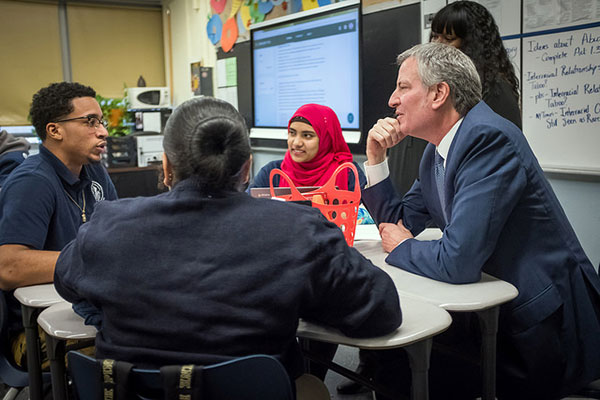
(Photo via Ed Reed/Mayor's Office)
Curbed NY recently reported that the vast majority of the affordable-housing units created under Mayor Bill de Blasio’s Housing New York plan are unaffordable to large swaths of the population. The ironic response from New York City’s Department of Housing Preservation and Development (HPD) was that the policy promotes “diverse and integrated neighborhoods.”
This explanation is puzzling, to say the least, for integration advocates. The phrase “integrated neighborhoods” does not appear once in the mayor’s 117-page housing plan, and there is only a single reference to “fair housing.” “Diverse neighborhood” does appear frequently, but only to signify “affordable to more than one income group” - rather than a larger goal of opening neighborhoods where more resources and opportunities are clustered and where few affordable housing units exist.
The administration’s actions speak even louder than its words. Inclusionary housing - as its name suggests - should provide historically excluded populations with expanded housing choices including access to “higher opportunity” neighborhoods. The de Blasio administration flipped this concept on its head with its mandatory inclusionary housing regime - primarily targeting some of the poorest neighborhoods of color for “affordable” housing development with limited opportunities for the lowest-income populations to participate, putting them at considerable risk of displacement and homelessness.
The new law does not even include reasonable guidelines to ensure that affordable housing is built in areas that offer greater educational opportunity. The administration is fighting a lawsuit which seeks to eliminate the City’s outsider-restriction (or “community preference”) policy that appears to violate the Fair Housing Act. Most recently, both HPD and the Human Rights Commission came out to testify against a modest piece of legislation that would have placed reasonable restrictions on housing co-ops to reduce illegal housing discrimination.
For school-integration advocates, this all feels familiar. In 2015, even as Chancellor Carmen Farina repeatedly dismissed the need for proactive school-integration policies, Deputy Mayor Richard Buery actively touted the benefits of classroom diversity to justify the universality of universal pre-K. (Fortunately, towards the end of her tenure the chancellor started to bend and took some important steps forward.)
For fair housing advocates, the City’s actions fail to affirmatively further fair housing and merely continue a long history of actions by government and private real estate interests that effectively reinforce patterns of poverty concentration and residential racial segregation and fuel a vicious cycle of inequality.
The administration invokes diversity and integration when convenient, while largely ignoring the pleas and policy prescriptions of school- and housing-integration experts. Occasionally, the strategy can feel divisive - creating a false opposition between the goals of caring for our most vulnerable citizens and dismantling the structures that produce and sustain racism, poverty, and inequality. At its worst, the strategy suggests that “diversity” is mere cover for an unfettered pro-development agenda that protects the interests of developers and many of the more affluent and predominantly white neighborhoods in the city. In any event, we see too many current school and housing policies as reinforcing the “tale of two cities” that the mayor himself campaigned against.
Continuing residential segregation by race and income is a condition that nourishes a host of inequalities including gentrification. We believe policies that produce meaningful integration in schools and housing are the best antidote to gentrification. As the federal government signals a clear retreat from enforcing the 50-year-old Fair Housing Act, we need local leadership on these issues now more than ever.
As historic demographic changes threaten to transform every aspect of New York City, we urge the mayor to begin exercising real leadership - for New York City and for metro areas across the nation. The integration of our communities is neither a political liability to be ducked, nor a convenient excuse to be exploited; it is an opportunity to lead. Our organizations stand ready to assist and support all efforts to create schools and neighborhoods that are inclusive and equally open to all New Yorkers.
***
Fred Freiberg is executive director of the Fair Housing Justice Center. David Tipson is executive director of New York Appleseed. On Twitter @FredFreiberg of @fairhousingnyc and @AppleseedNY.
***
Have an op-ed idea or submission for Gotham Gazette? Email This email address is being protected from spambots. You need JavaScript enabled to view it.
GothamTalks: What To Do If You're A Gentrifier

Gotham Gazette and New Leaders Council -- a nonpartisan, nonprofit leadership institute -- have partnered with Manhattan Neighborhood Network to create a series of video commentaries by New York City civic activists. GothamTalks is short video essays submitted through the New Leaders Council alumni network, which consists of hundreds of New Yorkers working in advocacy, government, campaigns, nonprofits, business, law, and other aspects of city life.
Like both the reporting we do at Gotham Gazette and the written op-ed columns we publish, the GothamTalks video commentaries range in subject, but are all meant to move the public discussion forward. Please watch, listen, and let us know what you think. Use #GothamTalks on social media, and tag us @GothamGazette and @NLC_NYC.
Note: The views expressed in GothamTalks are entirely those of the commentators, and not of Gotham Gazette or New Leaders Council.
************
March 14, 2018
Jordan Stockdale
Gentrification, and What To Do If You're a Gentrifier




